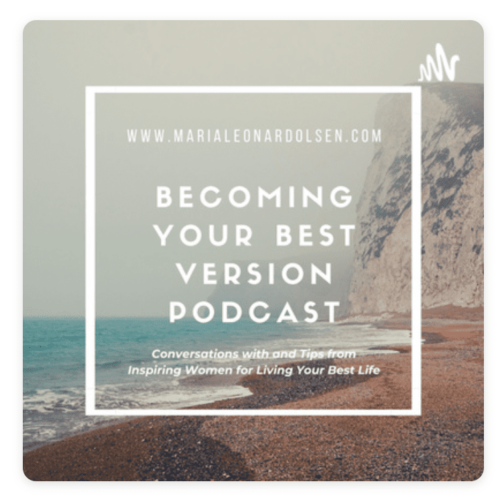Understanding Triggers to Beat Cravings
We are all vulnerable to food cravings, irrespective of how long we have been in food addiction recovery. Cravings are triggered by certain foods, people, places, and events, which cause the brain’s emotional centres to ignite. Cravings often catch us unaware and triggers sadly contribute to relapse.
However, by understanding a person’s unique triggers they can keep cravings at bay, and you or your clients can attempt to stop cravings before these situations even occur.
What Is A Trigger?
We live in a loud, fast-paced world crammed full of potential triggers. Every day we receive subtle, and obvious, messages from the media about the choices we should make and how we should be living. Not one of us can easily sidestep the temptations expertly propositioned by advertising experts. Unless we live in a bubble, it’s extremely difficult to maintain healthy habits all of the time. Yet even the smallest deviation from good food choices can begin a negative cycle of food cravings.
A trigger is simply a cue that prompts an increase in symptoms. Whether it’s specific foods, a feeling, or a situation that triggers food cravings; it’s important to recognise the impact a trigger has on our behaviour. With the right support, we can identify the triggers, and control how we respond to them for sustained improvement and recovery from food addiction.
Types Of Trigger
Trigger Foods
Trigger foods are highly refined carbohydrate foods that cause a series of specific processes within the body. The most common trigger foods are highly palatable due to the combination of high sugar, salt, or fat content e.g. ice cream, cakes, and French fries.
Once in the body, they are quickly converted into sugar. The influx of sugar causes an increased transmission of feel-good hormones; dopamine, serotonin, and norepinephrine to flood your brain, resulting in feelings of euphoria and ecstasy. It is this exact process that begins the eat-reward-crave cycle that becomes so difficult to resist.
Trigger foods are in and of themselves addictive due to their high calorific content and the high concentration of sugar or salt with fat. Even the smallest amounts of trigger foods can lead to a sustained cycle of addiction. According to Gary Wenck PhD. author of, ‘Your Brain on Food’, trigger foods cause your body to behave in the same way as it would with drugs such as cocaine.
Trigger Feelings
Trigger feelings are any emotions that trigger the negative cycle of binge eating. Trigger feelings can be positive or negative ranging from panic to joy. It’s not the type of feeling that matters, but rather the associated response it triggers. For instance, a feeling of joy may be linked to eating cake and thus all feelings of joy or happiness may cause a celebratory food craving for cake.
Susceptibility to emotional triggers varies among individuals, and researchers are still trying to understand the relationship between emotions, Diet, and food addiction. To manage trigger feelings it’s important to first identify the specific emotion that triggers the overconsumption of food. Once the emotion (and possible associated memories) are determined, it becomes possible to develop strategies that process the emotion(s) without using food.
Sensory Triggers
Sensory triggers are subtly powerful; they can involve multiple senses which pull you towards an emotional response before you’re aware of what’s happening. Sensory triggers can quickly transport you to a memory and the associated feelings. A person often fails to understand the underlying emotions that were triggered and finds themselves relying on ingrained coping mechanisms in response.
For example, a person who suffered domestic violence as a child may have developed a reliance on certain foods to self-soothe. Whenever that person experiences sensory stimuli (such as loud noises) that subconsciously remind them of their painful childhood memories, they may be triggered through associated fear to comfort eat.
Habit Triggers
Habits are easily formed yet difficult to break. What we eat and when is often triggered by habitual patterns. It’s our brain’s way of saving energy; it’s much easier to follow automatic responses and use well-established patterns of thinking. For instance, if you’ve developed a pattern of eating whenever you watch tv, this becomes a habit that causes you to crave food every time you settle in front of the tv.
Environmental Triggers
Our environments have a big impact on our food cravings. It’s difficult to avoid the temptation of trigger foods when you’re frequently bombarded by advertisements and marketing strategies that are cleverly designed to do just that. We’re constantly reminded of the availability and easy accessibility of trigger foods to satisfy cravings. Simply seeing trigger foods can stimulate our appetite and the reward part of our brains. This combined with expert marketing makes them extremely difficult to resist.
How To Control Triggers
Boost Feel-Good Neurotransmitters The Right Way
Get outdoors in nature, Exercise, dedicate time to rest and relaxation. Ensure you eat a diet rich in nutrient-dense foods. Exercise and diet are proven to increase levels of feel-good hormones without compromising your health.
Choose Nutrient-Dense Foods
A diet that delivers a full range of minerals and vitamins without causing fluctuations in blood sugar is important to keep you full for longer and stave off food cravings. Staying hydrated is also incredibly important to prevent eating beyond hunger.
Develop New Strategies
If you find you’re most likely to consume trigger foods as a coping mechanism, try to understand your uncomfortable feelings. Talk with a trusted friend or trained food coach who can help you process your experiences. Be intentional about building a community of support and resources around you. You can utilise these when you’re tempted to revert to unhealthy coping strategies.
Replace Old Habits
Replace habitual eating of trigger foods with alternative healthy snacks. Keep a good supply of nutrient-dense foods with you whenever travelling so you’re not tempted to give in to environmental triggers.
Seek Help
Ask friends and family to support your recovery. Contact them at low points instead of reaching for food. Seek professional help from a trained food coach who can expertly guide you to a sustainable healthy Lifestyle.
Take Control
We cannot control our environment but we can control how we interact with it. To regulate our food cravings we have to take an intentional and multi-faceted approach. Recovery is about making the right choices and equipping yourself with the correct level of support.
The post Understanding Triggers to Beat Cravings appeared first on Food Addiction Coach.
























